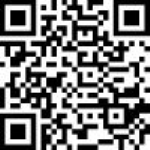Application of a Diagnostic Instrument with Item Confidence to Explore across Graders’Understanding of Simple and Series Circuits and Their Sources
Author: Jing-Wen Lin(Graduate Institution of Science Education and Department of Curriculum Design and Human Potentials Development, Nantioal Dong Hwa University)、Yu-Lun Wu(Science Eduction Division,Department of Applied Physics and Chemistry, Taipei Municipal University of Education)
Vol.&No.:Vol. 58, No. 2
Date:June 2013
Pages:25-56
DOI:10.3966/2073753X2013065802002
Abstract:
This study is a quantitative survey with several qualitative interviews of participants. A diagnostic test with item confidence and source of an answer was used to diagnose 331 third graders’ and 335 fifth graders’ adequate understanding, guessing, knowledge deficiency, or alternative answering type in the topic of simple and series circuits. Moreover, the sources of the correct answers and alternative answering types were further examined. The results show that students’ correct answers are mostly adequate in understanding, but incorrect answers are alternative answering types. The alternative answering types that both third and fifth graders have are difficult to conceptual change by informal teaching. They are “the volume of a battery influences the strength of current and the light degree of a bulb” and two other answering types. Furthermore, the source of the third graders’ typical alternative types is “intuition,” and those of the fifth graders are “experiment” and “intuition.” This study suggests using cognitive conflict and a system schema of a circuit to reconstruct students’ intuitive reasoning.
Keywords:item confidence, answering type, circuit, source of an answer
 《Full Text》
《Full Text》
